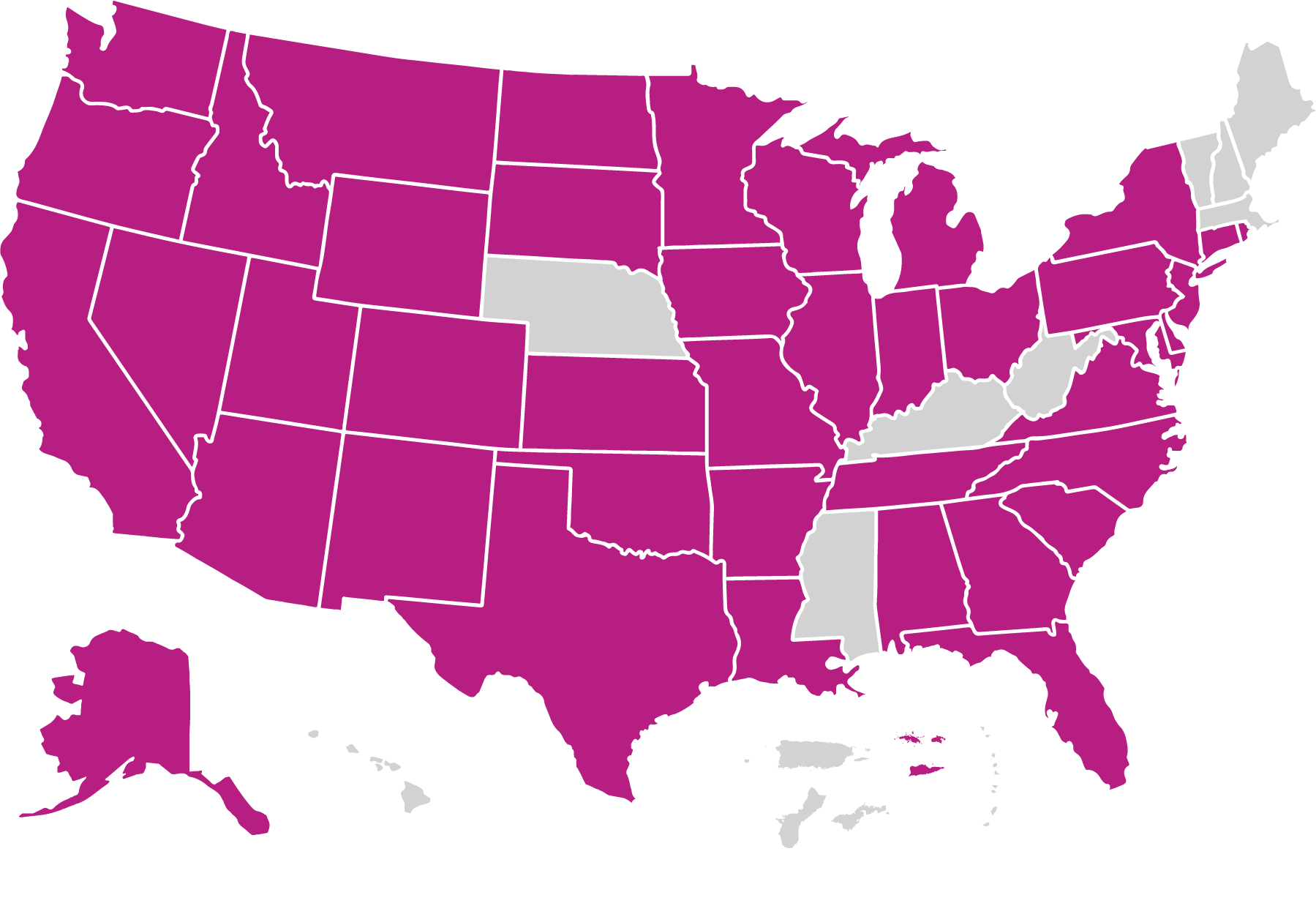Nurse-Family Partnership
Nurse-Family Partnership seeks to improve participants’ lives in three key areas: pregnancy outcomes (by helping women improve prenatal health), child health and development (by helping parents provide sensitive and competent caregiving), and parents’ life trajectories (by helping them develop a vision for their future, plan subsequent pregnancies, continue their education, and find work).
What is the model’s approach to providing home visiting services?
Home visits take place based on a family’s level of need and a child’s age. Services are provided until the child’s second birthday. Nurse-Family Partnership requires families to initiate services prenatally by the 28th week of pregnancy.
Nurse-Family Partnership’s service population includes the following:
- Expectant caregivers
- Families with low incomes or limited resources
- First-time caregivers
Who is implementing the model?
Home Visitors
Nurse-Family Partnership was implemented by 2,035 home visitors in 2020. The model requires a bachelor’s degree in nursing for home visitors. The minimum caseload requirement for home visitors is 25 families.
Supervisors
Nurse-Family Partnership was implemented by 310 supervisors in 2020. The model requires a bachelor’s degree in nursing for supervisors; a master’s degree in nursing is recommended.
Where is the model implemented?
Nurse-Family Partnership operated in 275 local agencies across 41 states and the U.S. Virgin Islands in 2020.

Families Served Through Evidence-Based Home Visiting in 2020
Race
2% American Indian/Alaska Native
3% Asian
34% Black
<1% Native Hawaiian/Pacific Islander
53% White
7% Multiple
Caregiver age
34% ≤21 years
47% 22-29 years
18% 30-44 years
<1% ≥45 years
Caregiver education
21% No HS diploma
66% HS diploma or GED
9% Some college or training
4% Bachelor's degree or higher
Ethnicity
33% Hispanic or Latino
Household income
98% Low-income status
Primary Language
85% English
11% Spanish
3% Another language
Child insurance status
91% Public
6% Private
3% None
Child age
45% <1 year
55% 1-2 years
0% 3-5 years
